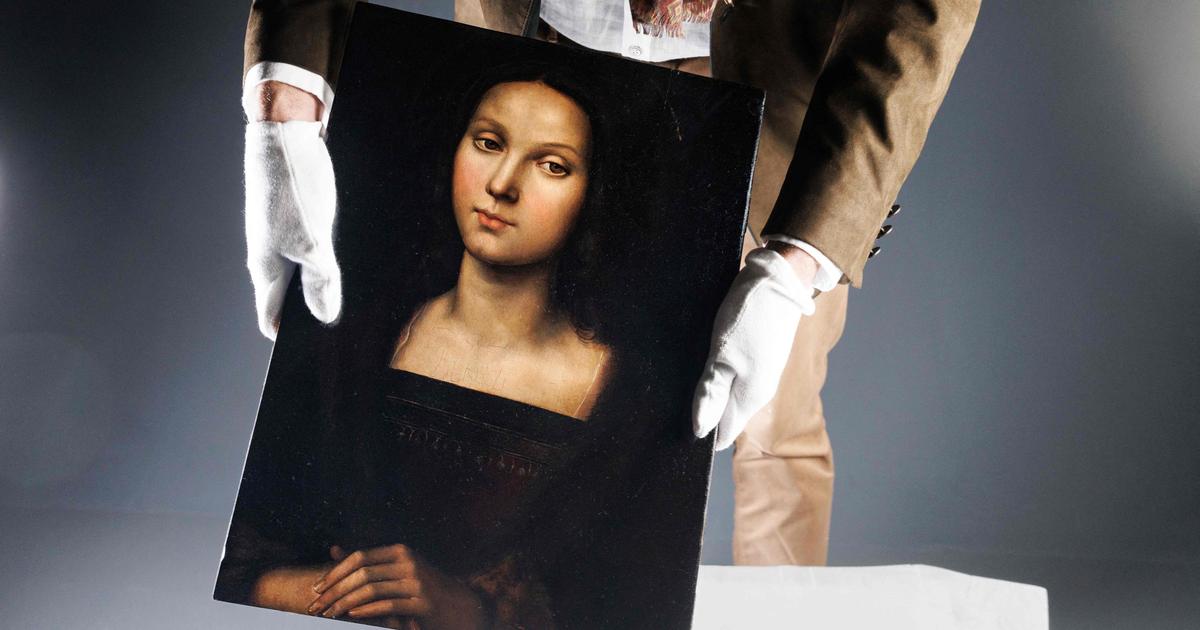French and Italian experts have just authenticated a portrait of Saint Mary Magdalene as a masterpiece by the Italian Renaissance painter and architect.
French collectors bought this painting on the internet this year without knowing its history: French and Italian experts have just authenticated it as a masterpiece by the Italian Renaissance painter and architect Raphaël, dated from his meeting with Leonardo da Vinci around 1505.
“When I saw her photo online for the first time, this Saint Mary Magdalene immediately caught my attention”, one of the collectors told AFP on condition of anonymity. He and his acolytes bought from a London gallery for 30,000 pounds sterling (nearly 35,000 euros). “When she arrived, it was even more touching, even though she was really dirty,” he remembers. Thinking that it is a painting from the school of Leonardo da Vinci, he calls on the expertise of Annalisa Di Maria, member of the UNESCO group of experts in Florence (Italy) who authenticated the work in September.
This reattribution “does not change anything about its spiritual beauty”, adds this thirty-year-old, collector like his father, who would like to share this discovery “exceptional” with the general public by entrusting it to a museum. The experts’ conclusions, available online, were published by the specialized journal “ISTE, Open Science, Arts et Sciences” whose editorial committee includes Philippe Walter, director of the CNRS and former director of the Louvre laboratory. After countless analyses, including the visualization using infrared light of the layers of carbon hidden by the paint pigments, they were able to attribute the painting to Raphael, the French name of Raffaello Sanzio (1483-1520).
Ces analyses, «’based on the latest advances in science, have notably highlighted the ‘repentances’, that is to say the formal readjustments carried out by the painter until the final version of the work, and his ‘Spolvero’ technique ‘, the transfer of a drawing from a first support to its final support», as for the Mona Lisa da Vinci. Two other versions of the Madeleine have been listed, including one attributed to Perugino, who was Raphael’s master and then collaborator.
A painting considered lost
The one painted by Raphaël on a poplar panel in the 46×33 cm format is “of great mastery and incredible finesse of execution which, added to the scientific elements, attest that the portrait really comes from this genius», underlines Annalisa Di Maria. Research in the archives of the city of Florence also made it possible to trace the provenance of the painting which “was considered lost”, according to the specialist.
Before its purchase by French collectors, “it belonged to a private collection in the north of England and ended up in a small auction, where the London gallery acquired it thinking that it was a painting from the school of Leonardo de Vinci», recalls another expert, Nathalie Popis, specialist in applied mathematics in Renaissance art.
This discovery “shows the influence of Leonardo da Vinci (1452-1519) on Raphael, who emancipated himself from the art of Perugino» at the time of their meeting and adopted his technique of “Sfumato”, the superposition of very thin layers of translucent monochrome glazes, add the experts. His model is probably Chiara Fancelli, wife of Perugino, to whom the Madeleine which is in the Pitti Palace in Florence is attributed.
«Another version, whose attribution remains to be determined, is in the Villa Borghese in Rome. There is no trace of it before 1693, a time when many copies were circulating.», Points out Nathalie Popis, who carried out comparative studies of the saint’s face with Jean-Charles Pomerol, member of the Paris scientific committee and former president of the Parisian Pierre-et-Marie-Curie University.
None of the experts interviewed by AFP wanted to estimate the value of the Madeleine found. Before the publication of the study and without providing elements of counter-expertise, its attribution to Raphael was contested by certain sources in Italy, including the president of the Raffaello Academy of Urbino (another name attributed to Raphael, d ‘after his native village, editor’s note), who believed that it was “surely from a prototype of Perugino”according to the Journal des Arts.
This discovery recalls that “Salvator Mundi” (Savior of the World in Latin), described as “male double of the Mona Lisa” and attributed to Leonardo da Vinci after restoration, without the results of its authentication being published, was resold for 450 million of dollars at auction in 2017 in New York. Its buyer would be Saudi Prince Mohammed bin Salman, which has never been officially confirmed. It was bought for less than $2,000 by a New York art dealer at an auction in New Orleans in 2005.
